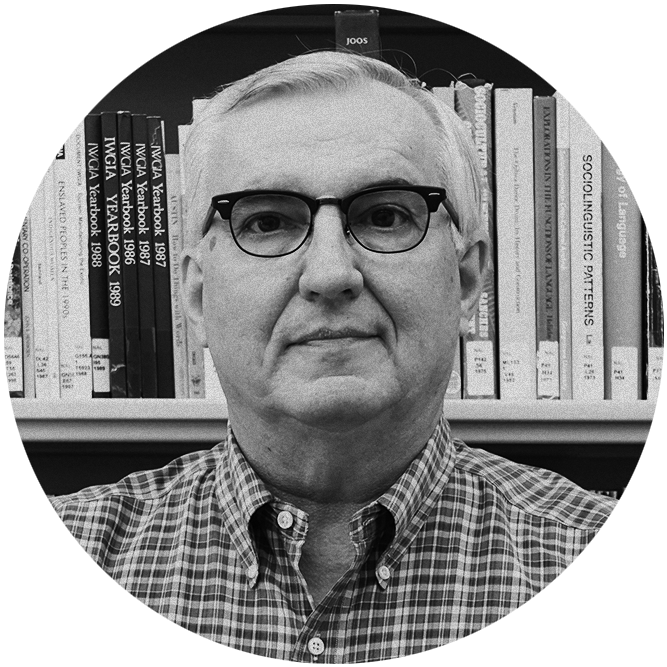It is a great pleasure to present the 2018 annual report for the Sam Noble Oklahoma Museum of Natural History. Our museum ranks among the finest university museums in the world and we continue to serve as the state’s official natural history museum with pride and distinction. In the past year we embraced our core mission to steward our collections for the benefit of the people of Oklahoma and share the insights gained through our cutting edge research with a broad public.
In May 2018, the OU Board of Regents appointed me as interim museum director and I assumed the responsibilities of the position on July 1. My first term as your director has been focused on our transition to a new university administration. The museum is well-positioned to support President Gallogly’s agenda to expand research and enhance graduate student education at the University of Oklahoma. A major factor in our ability to immediately meet this challenge is the institutional foundation established by Michael Mares, director emeritus. Mares retired last year after 37 years of service to the museum and university. The executive staff of the museum has worked closely with the offices of the President and Provost over the past year to better define future expectations and opportunities at the Sam Noble Museum.
We are fortunate to have the support of an incredible Board of Visitors comprised of leaders in education, tribal governance, business, industry and philanthropy. This group of community leaders provides invaluable service to the museum in terms of time, talent and treasure. Reggie Whitten agreed to serve a new term as Chairperson and I have greatly benefitted from his experience as a lifetime member of the board and tireless advocate of the museum. The Board of Visitors works to forward the mission of the museum and provide external guidance and support for institutional advancement.
The collections and research staff of the museum continued a program of original research in Oklahoma and around the globe. Fieldwork is at the core of our research mission to enhance our understanding of the physical and cultural world that we inhabit. As a university museum, this process of knowledge production and circulation is anchored in the work of our curators as scholars, professors and student mentors. In addition to the production of scientific data, fieldwork expands our collections and fosters new opportunities for international collaboration. Current research at the museum ranges from a population inventory and genomic study of Texas horned lizards at Tinker Air Force Base in Oklahoma City to indigenous language documentation in the Chaco region of Paraguay.
In 2018 the museum hosted a series of exceptional exhibitions and their associated programs. Deployed in the museum’s lobby, Native Voices: Native Peoples Concepts of Health and Illness explored the interconnectedness of wellness, illness and cultural life for Native Americans, Alaska Natives and Native Hawaiians. In the Dorothy Higginbotham gallery we hosted Celestial Siblings: Parallel Landscapes of Earth and Mars, an exhibition that investigated the common landscape features of Mars and Earth and the physical forces that created them. This was followed by Putting Baskets to Work in Southwest China, an exploration of the continued production and use of baskets in rural China. During the run of the exhibition we hosted a student delegation from Beijing National University and enjoyed a gallery talk by Jason Baird Jackson, curator of the exhibition and director of the Mathers Museum of World Culture at Indiana University.
In the Fred and Enid Brown temporary exhibition gallery we began the year with Fluent Generations: The Art of Anita, Tom and Yatika Fields. This exhibition and its accompanying catalog featured the ceramic and fabric works of Anita, the photography of Tom and paintings by their son Yatika. Programs in conjunction with the exhibition included gallery talks by the artists and the painting of a mural-sized work in the gallery by Yatika over the course of several weeks. Our summer exhibition was Megalodon: Largest Shark that Ever Lived. This exhibition generated great public interest and supported a very successful year for the museum. We held a number of breakfast-themed, family events, Munch with Megalodon, with a great response from the community.
The museum’s education department initiated a number of new programs and visitor experiences this year, including Super Saturday Programs, Adults Only Night at the Museum, Spring Break Camp, expanded Birthday parties and Summer Explorer Day Camps. The department also assumed leadership of the major public events of the museum, leading to enhanced programs for Spooktacular, Holiday Happening and Eggstravaganza. These efforts represent our efforts to enhance visitor experiences, provide new amenities for our members and attract new audiences to the museum.
I look forward to a new year in the life of the museum and find solace in the unique role museums assume in contemporary American society. The Sam Noble Museum is an important force in our community that provides a major connection between the university and the people of Oklahoma. I want to thank the staff, volunteers and students of the museum for their service and dedication. They each contribute in important ways to the work we undertake to advance the mission of the museum.
Sincerely,


Daniel C. Swan, PhD
Interim Director
Professor of Anthropology